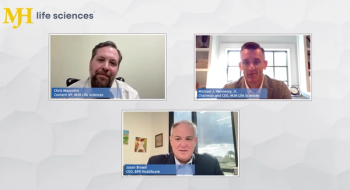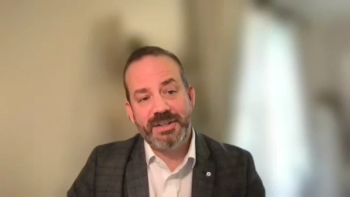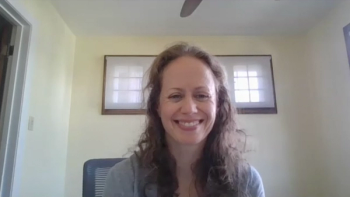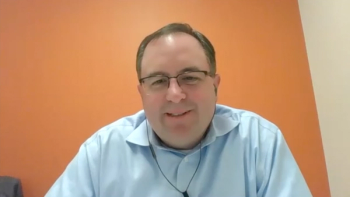
PX: The Undisruptable Elements of Healthcare
Forget the complaints – healthcare does plenty of things right, too. So where should hospitals bow to disruption, and where should they double down their efforts?
Almost everyone can agree that healthcare must be improved. But few agree on how it should be improved, and who should do the improving. To get a feel for our experts' opinions on those questions, just watch any of the other segments in this Peer Exchange. But if you want to know what healthcare is doing right, and where it should double down on its current habits, look no further than this very webpage.
The Undisruptable Elements of Healthcare
A Healthcare Analytics News® Peer Exchange®
Segment 10/13
Kevin R. Campbell, MD: One of the biggest players that we really haven’t talked about in healthcare is hospitals and hospital systems. Day in and day out, we see more and more consolidation of healthcare systems. In my world, Duke is buying up everything, UNC [University of North Carolina] is buying up everything, and Singer Clinic in Charlotte is buying up everything, so you have fewer choices. But this is a big deal as we begin this disruption and this innovation in healthcare. What does it mean to hospital systems and healthcare systems, and how might it impact them? What are the pros? What are the cons? I’ll toss that to you, Colin.
Colin Hung, BaSC: One of the pros of all this innovation is it’s going to make them more efficient. I think as all these innovations come out, as all the disruption happens around the supply chain and around clinical practice, it’s going to make these larger entities more efficient, which is really what they went and did all this M and A [mergers and acquisitions] work for. I think their big challenge is actually not so much in their size but more around culture and changing the culture so that they can adopt these changes much quicker. Because right now, I think they’re ill-equipped for that. They’re not really equipped to absorb these changes that are going to happen, they’re not really equipped to absorb all the different practices they’ve actually acquired over the last little while. I think there needs to be a change that happens around that aspect.
Geeta Nayyar, MD, MBA: I’d like to add on to that. I think one of the biggest problems health systems have is that is they’ve just got to partner. They have such small margins. They’re barely keeping doors open at this point. And now, with the shift to everything being outpatient, they’re so afraid of filling their beds. I think it’s about partnering with the disrupter, partnering with an Apple, a Google, or a startup. They need an appetite for failure, an appetite to realize where they fit into disruption and innovation. I think a fundamental identity crisis needs to happen to say, “Look, this is just not who we are, but we play such an important role. Come to us. Our doctors will be the end user, the stakeholder. Our patients will be in the pilot, and we’ll partner with you.”
Kevin R. Campbell, MD: My concern when you talk about big healthcare systems, and I’ve watched it happen throughout my career, is we have moved away from a healthcare system that includes the voices of doctors: how we run the hospital, how we run the operating room, how we run the catheterization lab. We have been eliminated from that decision-making process. We are nothing more than employees. We are just there to perform a service with no say-so, and all the expenditure of the healthcare system is not in this middle-level administration. I’m concerned that these middle-level administrators do not have the insight and the understanding to embrace these type of technologic innovations and changes.
Geeta Nayyar, MD, MBA: They don’t.
Jane Sarasohn-Kahn, MA, MHSA: Let me build on what Geeta is talking about. It’s an economic view for communities. We have to think about the ecosystem of a community. Hospitals are the economic engines in their local markets. They’re big employers. It’s why in the United States — probably in Canada as well, particularly in Canada — it’s very hard to close beds because they employ people. Every bed spawns off a few more jobs, and then that hospital spawns jobs in the local community: the florist, the coffee provider, etc.
I just read an article on how telehealth is now challenging the real estate model of the hospital because more care is going out. But we can look at folks like Mercy Virtual in Missouri, Intermountain Healthcare, or UPMC [University of Pittsburgh Medical Center]. They all have plans to build ‘virtual hospitals,’ which are going to be the brain child that will then provide advice to the hinterlands, rural areas, and maybe even cross-state if people have licenses. The opportunity for physicians and hospitals at the same time is that you all have to reinvent yourselves. The hospital needs to think, What are we without beds? What is our role? I’ll tell you what you are: You are a key community player. You know your community, you know the people, you love the people in your community. There’s humanity in the hospital, it’s very trusted. Who’s the most trusted employee in America? The nurse, the pharmacist, the doctor, according to Paris’ poll every year for 10 years, except in the last year pharmacists fell because of opioids — that’s a whole other discussion — and firefighters are up. In any case, it’s about reinventing the role of the physician. Physicians are now digital experts, or they are going to be.
Kevin R. Campbell, MD: But they’re not; they’re behind the tide.
Jane Sarasohn-Kahn, MA, MHSA: They have to become the digital health coach, and the hospitals have to be the center of those social determinants of health. Come here. Let me talk about Geisinger Health. I don’t want to hog the spotlight but one innovator, Geisinger, in the center of my state of Pennsylvania, is using genotyping on babies, newborns. They have their 10-year-old precision medicine project. Eric Topol now says Geisinger is the place to look at for genetic and precision medicine. But what else is Geisinger doing? There’s a food pharmacy for people with type 2 diabetes to get people eating right, shopping right, and reading labels. Geisinger’s got it womb to tomb, and everything in between. They will be relevant to that center swath of the state of Pennsylvania, and other hospitals have to re-imagine who are we for this market. I will leave it there.
Geeta Nayyar, MD, MBA: Jane, I think that’s brilliant. The only other thing I’d add to that is again, the fear of failure. There has to be an appetite for failure. To Kevin’s point about middle management, there are some SVP [senior vice presidents] and EVP [executive vice presidents] who are terrified of taking a chance, and there has to be an appetite for that.
Kevin R. Campbell, MD: For them, the status quo is OK. Their metrics are just to keep the boat afloat.
Get the best insights in healthcare analytics directly to your inbox with our newsletter.
Watch Every Episode:



































